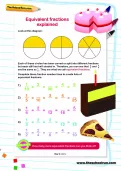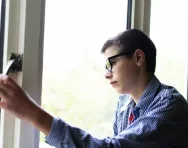Important update from TheSchoolRun
For the past 13 years, TheSchoolRun has been run by a small team of mums working from home, dedicated to providing quality educational resources to primary school parents. Unfortunately, rising supplier costs and falling revenue have made it impossible for us to continue operating, and we’ve had to make the difficult decision to close. The good news: We’ve arranged for another educational provider to take over many of our resources. These will be hosted on a new portal, where the content will be updated and expanded to support your child’s learning.
What this means for subscribers:
- Your subscription is still active, and for now, you can keep using the website as normal — just log in with your usual details to access all our articles and resources*.
- In a few months, all resources will move to the new portal. You’ll continue to have access there until your subscription ends. We’ll send you full details nearer the time.
- As a thank you for your support, we’ll also be sending you 16 primary school eBooks (worth £108.84) to download and keep.
A few changes to be aware of:
- The Learning Journey weekly email has ended, but your child’s plan will still be updated on your dashboard each Monday. Just log in to see the recommended worksheets.
- The 11+ weekly emails have now ended. We sent you all the remaining emails in the series at the end of March — please check your inbox (and spam folder) if you haven’t seen them. You can also follow the full programme here: 11+ Learning Journey.
If you have any questions, please contact us at [email protected]. Thank you for being part of our journey it’s been a privilege to support your family’s learning.
*If you need to reset your password, it will still work as usual. Please check your spam folder if the reset email doesn’t appear in your inbox.
What is a teaching assistant?

Teaching assistants may be referred to as a ‘mums’ army’ due to the family-friendly, school hours nature of their job, but their role in the classroom goes far beyond wiping noses and hunting for lost jumpers. Since 2000, the number of teaching assistants (TAs) working in schools in England has trebled, and they play a vital part in primary-school children’s learning. But what does their job involve and how can they help your child succeed at school?
Teaching assistants in primary schools
There’s no statutory requirement for primary schools to employ TAs. From Reception upwards, the law simply says that there must be one teacher for every 30 children. Nursery classes have different rules, and need one adult for every 13 children (usually a TA or nursery nurse as well as the main teacher). But although schools don’t have to employ TAs, many do, with almost 250,000 full-time-equivalent TAs currently working in English schools.


Boost Your Child's Maths & English Skills!
- Start your child on a tailored learning programme
- Weekly resources delivered to your dashboard
- Keep your child's learning on track
What do teaching assistants actually do?
TAs have two main roles: supporting children’s learning, and supporting the main class teacher. In primary schools, their duties include:
- Setting up equipment and helping to prepare the classroom for lessons, tidying up afterwards and helping with displays.
- Providing support to children who need additional help with their work.
- Helping pupils develop independent learning skills, manage their own learning and prioritise their time.
- Providing one-to-one and small group support to children who need it.
- Listening to children read.
- Helping the teacher with their marking and record-keeping.
- Looking after children’s pastoral needs, including dealing with playground accidents and caring for children who are upset.
- Helping with school trips, events and outings.
Some TAs have a specific area of responsibility: for example, they might be employed to help children with their literacy or numeracy, to teach a foreign language or to work with pupils who have special educational needs.
Although TAs will often supervise a class if the teacher is temporarily unavailable, they shouldn’t be used as substitute teachers as a matter of course – for example, if the regular teacher is off sick, the school should arrange cover from a qualified teacher.
However, TAs who have qualified as higher level teaching assistants (HLTAs) are allowed to teach classes on their own, cover the teacher’s absences and give the teacher time to plan and mark children’s work by taking some lessons.
What qualifications do TAs need?
Despite their key role in supporting children’s learning, TAs don’t need any formal qualifications, although schools or local authorities may have their own requirements. As a minimum, TAs need to have good standards of literacy and numeracy, and good organisational skills. They will usually have had experience of working with children, although this might not have been in a school environment.
Once in position, TAs are usually sent on an induction course, and most will also be offered extra continuing professional development by their school – for example, TAs might be sent on courses on working with children with special educational needs, or on supporting children with English as a second language.
HLTAs have to have a nationally recognised qualification in literacy and numeracy, and take a three-day HLTA preparation course. They then undergo a half-day assessment based in school before being awarded the qualification.
The pros and cons of TAs
TAs are often a real asset in the classroom. Teachers say that TAs help to reduce stress and work pressures, and keep disruption to a minimum. Parents, too, often sing the praises of TAs. ‘Tia’s TA helps the teacher concentrate on the less able, but also on pushing the more able ahead,’ says Dimal Patel, dad to Tia, Year 2. ‘I don’t think Tia would be succeeding as well as she is without her TA encouraging her in curricular and non-curricular activities.’
Johanna Haworth, whose daughter is also in Year 2, agrees. ‘Ava is very shy and doesn’t talk much in groups, but the TA has built her confidence up and she is starting to join in,’ she explains. ‘She also monitors my daughter’s food as she has coeliac disease, and went away and researched it so she was better informed. TAs are so valuable and are definitely educators too.’
Surprisingly, though, recent research by the Institute of Education shows that pupils who are supported by TAs make less progress than other children with similar needs. These baffling findings are attributed to the fact that TAs – who often have limited training – are often allocated to children with complex educational needs, which reduces their contact with the qualified teacher.
To combat this problem, it’s recommended that TAs shouldn’t be used as substitute teachers for lower-ability children. Instead, they should support teachers to spend more time with these children. They should also receive more training, and be given time to meet with the teacher to prepare for lessons and discuss pupils’ learning, for example by joining teachers in their PPA time and being given detailed lesson plans in advance so they’re best placed to support every child in the class.








